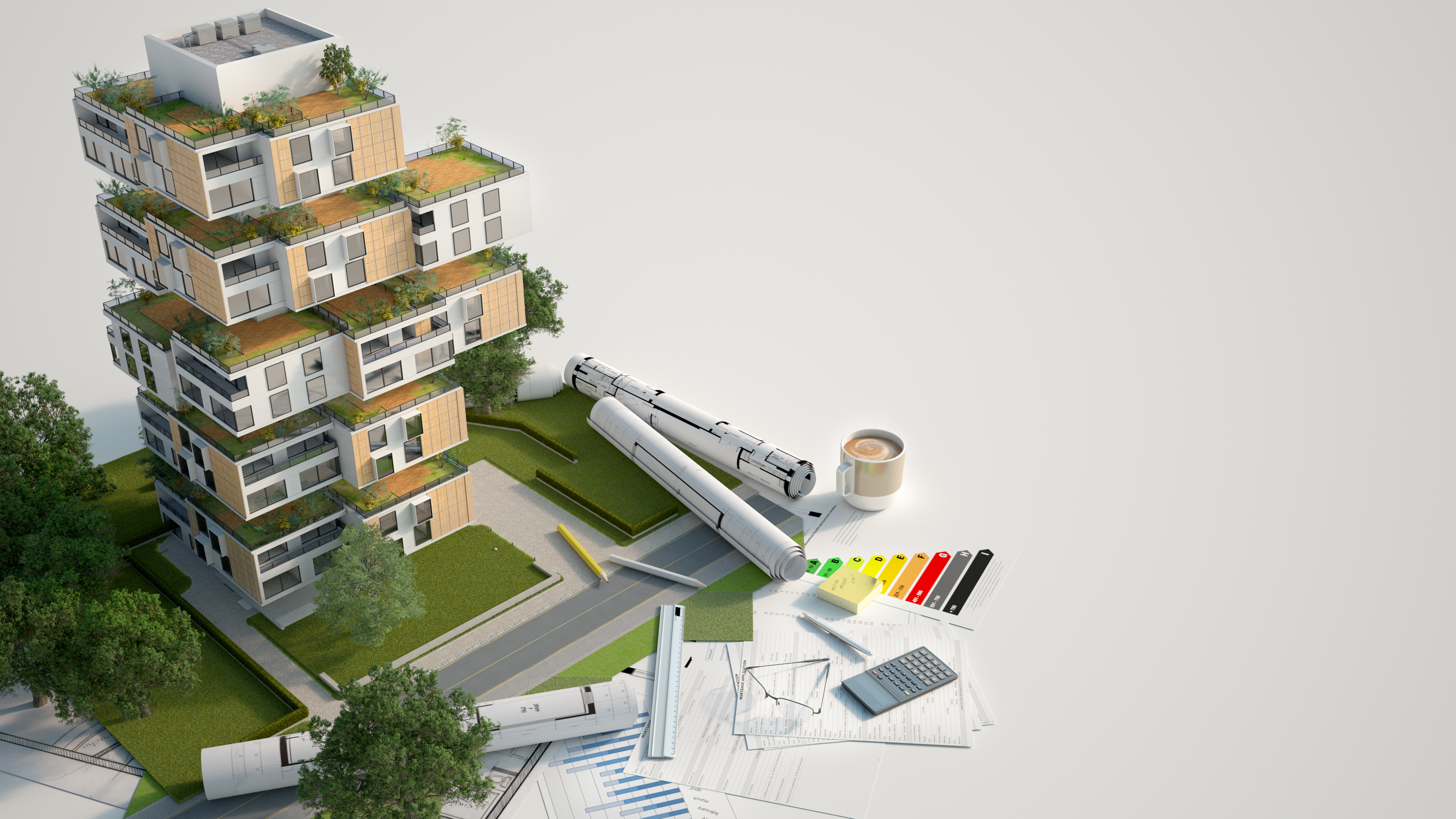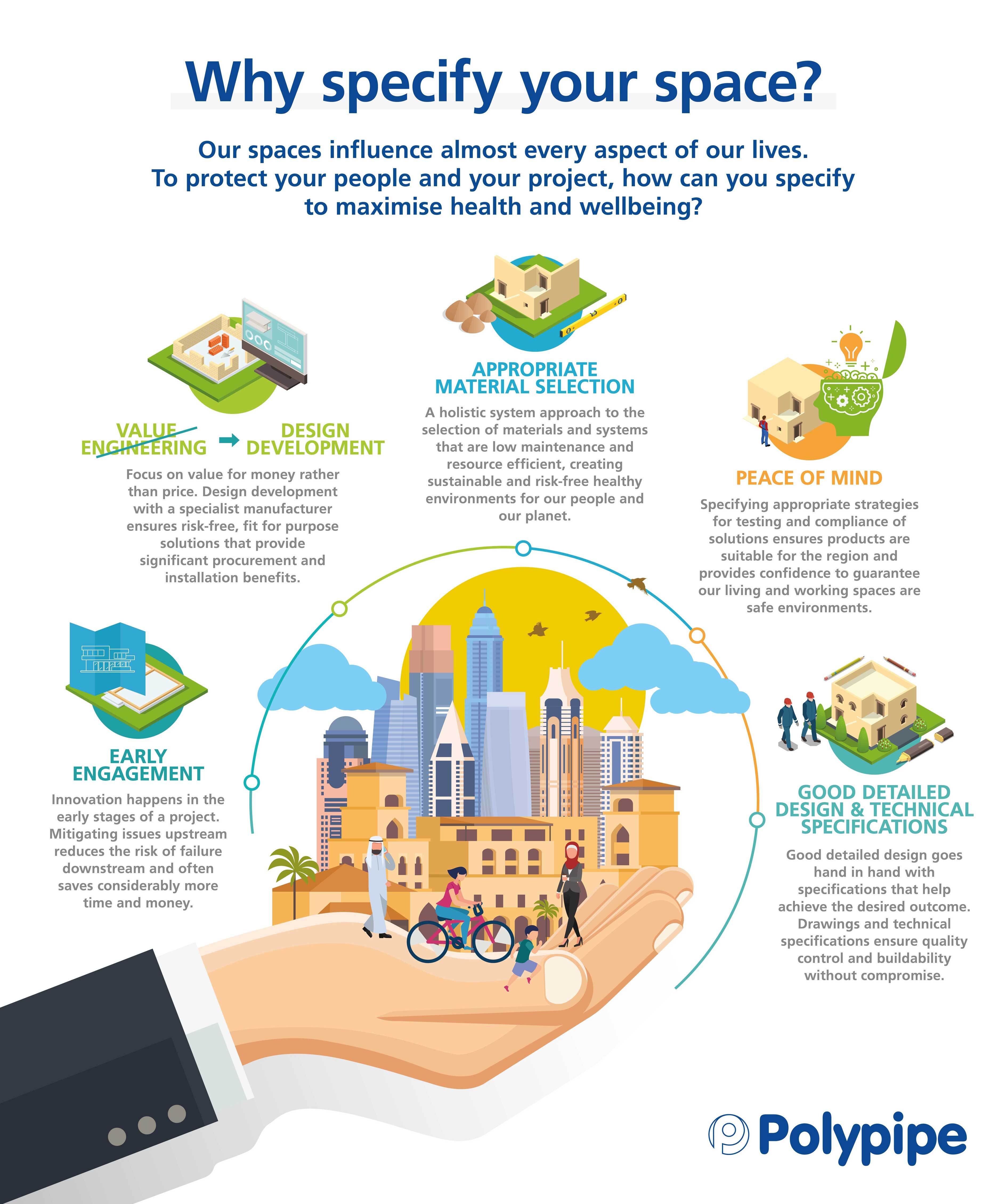
Our spaces, both in terms of location and the physical building itself, are inevitably linked to almost every aspect of our lives.
They profoundly shape us. Whether it’s in our homes, schools, workplaces, healthcare facilities or retail centres, we spend the majority of our day - around 20 hours - indoors.[i]
The buildings which we work, learn and live in are a vital, yet often overlooked factor of human health and wellbeing. A healthy building is one that supports the physical, mental and social health and wellbeing of its occupants and also, of the wider built environment. Unfortunately, in many instances buildings are often poorly constructed to save time and cut costs. There are many factors that can contribute to this issue including poor design, buildability and a lack of end-to-end supply chain management.
Why Specify?
It’s simple: healthy buildings equal healthier people.
It’s important to recognise that our health and wellbeing is impacted by variety of determinants in our buildings, such as:
- Ventilation
- Indoor air quality
- Chemical contaminants
- Thermal comfort
- Noise
- Lighting
These are all deeply affected by how buildings are specified - design, material selection, installation and maintenance.
Buildings that fail to optimise these determinants for health and wellbeing can be responsible for causing a number of harmful health effects. For example, indoor air pollution can cause respiratory illnesses. High noise levels and suboptimal lighting can contribute to anxiety and depression.
In fact, unhealthy buildings can even cause a distinct medical condition known as Sick Building Syndrome (SBS). Sick Building Syndrome is when one’s indoor environment causes negative health symptoms such as headaches, fatigue and respiratory irritation.
Additionally, there is also an environmental and economic aspect to creating healthier buildings. The buildings sector has been identified as one of the key sectors in need of transformation in order to achieve global climate change targets. Furthermore, almost all buildings could benefit from reducing energy demands and improving energy-efficiency, which could consequently save costs for occupants and owners.
How to specify your space
Specifying your space properly can help create healthier, more efficient spaces. Robust specifications, with close control of design, production and materials, offer improved value and functionality.
So, what are the key elements to consider when specifying your space?
1) Early Engagement
Early engagement is crucial to the success of any project. For example, engaging with relevant planning authorities to understand policy and regulatory issues can ensure all design, construction, installation and maintenance is up to code, mitigating issues that may arise later.
In the initial stages of a project is where innovation really comes into play. Taking any potential opportunities and constraints for the site into consideration at an earlier stage reduces the risk of failure at a later stage whilst also helping to save time and money.
The truth is, creating better quality, healthier spaces does not necessarily need to cost more. The key to reducing costs is to incorporate features that support health and wellbeing right from the start of the design and procurement process, rather than making adjustments at a later stage.
2) Design Development
In the design development stage, it is essential to focus on value for money rather than price.
At this point, budgets, flexibility and standards for technical quality can be determined and set to ensure durability, functionality and design of the finished building. This protects against unsuitable substitutions or inappropriate design amends that may result in issues that will only appear once the building is occupied.
Using a specialist manufacturer helps to mitigate these potential problems. Experience and expertise allow specialists to provide risk-free, fit-for-purpose solutions with installation and procurement benefits.
3) Appropriate Material Selection
A building is a complex system, comprised of diverse elements that work cohesively to form a holistic space.
Selecting the right materials for the various functions carried out by buildings and its occupants is important for creating healthier spaces.
Materials must be selected not only to meet the building’s intended functionality and performance, but they should also account for resilience and adaptation opportunities to meet future needs.
Selecting materials and systems that are low maintenance, low emission and resource efficient is more effective at creating sustainable, risk-free environments for our planet and our people.
The construction industry is increasingly expressing more interest in green buildings, which means that architects and specifiers now have more detailed information about which building materials and products can help meet sustainability goals. Working with a specialist to select materials that are more eco-friendly, energy efficient and enduring offer economic, social and physiological benefits.
4) Peace of Mind
Whether its initial design and consultation or construction and installation down the line, specifying appropriate and effective strategies allows every part of the process to be approached with focus, purpose and intention.
Ultimately, this provides peace of mind that the building will fulfil its proposed function and performance.
This includes specifying strategies for testing and compliance. Thorough testing and compliance of materials and systems ensures that they are suitable for the region and context in which they are being used and delivers confidence, rooted in evidence, that our spaces will be safe and efficient.
5) High-Quality Detailed Design and Technical Specifications
At the end of the day, the goal of the project is to achieve the desired outcome.
Using high-quality, detailed drawings and technical specifications ensures quality control and buildability without compromise.
The key is to consistently review the needs of the building occupants and owners so that the end product meets its intended purpose safely and efficiently.
All parties involved should be well versed in the process with appropriate knowledge in their respective fields (i.e. construction trends, design standards and regional regulations).
Here is an overview on the importance of specifying your space:
Appropriately specifying your space enables the creation of healthy spaces in the built environment.
Collaboration is vital to ensure high-quality design, specification, construction and maintenance of these spaces. Engaging key players in the industry as well as the general public guarantees that buildings will be well maintained, stay safe and enable social interaction.
With a highly experienced technical team, our experts are always available to discuss how you transform your project to better support health and wellbeing.
Contact us today to find out how we can help specify your project.
Tel: +971 (0) 4 518 3000
Email: middleeast@polypipe.com

